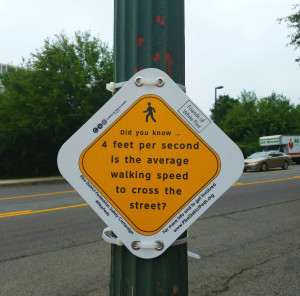Few topics can spoil polite conversation as swiftly as politics, religion and off-street parking. In a gentrifying city such as Washington, new housing means new residents means more cars — and pointed questions from natives on where all of those cars will go.
Now, in a policy paper released Monday, the White House has taken a side, coming down against rules across the nation that require developers to build parking spots.
“Parking requirements generally impose an undue burden on housing development, particularly for transit-oriented or affordable housing,” the paper states. “When transit-oriented developments are intended to help reduce automobile dependence, parking requirements can undermine that goal by inducing new residents to drive, thereby counteracting city goals for increased use of public transit, walking and biking.”
The anti-parking stance came from a “Housing Development Toolkit,” a broadside against zoning. The report says zoning “reduced the ability of many housing markets to respond to growing demand,” making affordable housing hard to find in high-price areas.
Nixing off-street parking is not the paper’s only recommendation. It also advocates taxing vacant land, making it easier to get permits and making cities more dense.
NIMBYs have got to go, the paper states.
“Yes, in our backyard, we need to break down the rules that stand in the way of building new housing,” it says.
“We want new development to replace vacant lots and rundown zombie properties, we want our children to be able to afford their first home, we want hardworking families to be able to take the next job on their ladder of opportunity, and we want our community to be part of the solution in reducing income inequality,” it states.
The paper, which points out that Washington “saw a 31 percent increase in family homelessness last year amid a 14 percent increase in homelessness overall,” is not silent on the D.C. region. It praises Fairfax County’s flexible zoning for “encouraging economic development.”
“These more flexible zoning regulations include 40-50 foot increases in building height, parking requirement reductions, and abbreviated fees and approval processes for development changes,” it reads.
This was the policy paper many urban planners have been waiting for.
“This is an amazing document,” Jeff Speck, a city planner and the author of
“Walkable City: How Downtown Can Save America, One Step at a Time,” wrote in an email. “It gets just about everything right.”
Speck, a former D.C. resident, praised the paper’s endorsement of density and “accessory dwelling units,” also known as backyard cottages or “granny flats.”
Offering U Street, where he owns a property, as an example, Speck said new residents should not be able to get resident-only parking permits the city previously offered.
“Particularly in cities where alternatives to driving exist, on-site parking is a build-it-and-they-will-come phenomenon,” Speck wrote. “If a building has parking spaces, people show up with cars. If it doesn’t, people show up without them.”
Stewart Schwartz, executive director of the Coalition for Smarter Growth, a nonprofit that promotes walkable communities, said debates about density and parking were endemic to the region, often pitting longtime residents against new arrivals.
“It’s a battle in every neighborhood,” Schwartz said, citing the fight over Georgetown Day School development in Tenleytown and the “communities not canyons” debate over the height of planned buildings in downtown Bethesda.
Dennis Williams, a Tenleytown resident who spoke out last year against the Georgetown Day development, said that he was not familiar with the White House paper but that his community is “concerned about height and density.”
“Other kinds of housing and building high-rise buildings close to residential areas reduces the quality of the environment around which we live and in which people raise their families,” he said.
The White House paper is novel for pushing a philosophy the Obama administration is not known for: deregulation.
“Economic insights are finally creeping into the administration, and that’s a good thing,” said Sanford Ikeda, a professor of economics at the State University of New York whose work is cited in the paper.
The District’s Office of Planning, which has proposed doing away with parking requirements for new construction in the past, was not available for comment Tuesday.
Image credit: Amanda Voisard, The Washington Post



